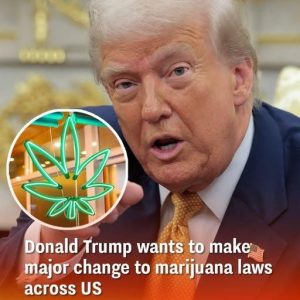Trump’s Proposed Tariff Plan Promises $2,000 Payouts, but Questions Remain
President Donald Trump recently tied his proposed tariff plan to a promise of direct payments to Americans, stating that each individual would receive at least $2,000, though high-income earners would be excluded. The announcement quickly drew attention for its appeal to voters seeking direct financial relief, but it left many critical details unspecified. The plan has raised questions not only about feasibility but also about its potential economic and legal implications.
While the promise of $2,000 payouts appears straightforward, key information has yet to be clarified. The president did not provide specifics on timelines, income thresholds, or other eligibility criteria that would determine who qualifies for the payments. As a result, millions of Americans are left uncertain about how and when they might actually receive any funds. This lack of detail has fueled speculation and debate among economists, policymakers, and the public alike.
Trump has framed tariffs as a potential revenue engine, arguing that they can boost domestic investment, strengthen national wealth, and enhance the country’s global standing. On social media, he criticized opponents of tariffs, emphasizing that they undermine the potential benefits of increased domestic manufacturing and trade leverage. According to the president, proceeds from tariffs could be redirected to fund the promised $2,000 payments while simultaneously contributing to the reduction of the national debt. In essence, the proposal links protectionist trade policies to tangible benefits for Americans, presenting a politically appealing narrative.
However, experts caution that the plan faces substantial financial and legal hurdles. Analysts estimate that distributing $2,000 per individual could result in total payouts ranging from $300 billion to $513 billion, far exceeding the projected revenue from tariffs. Such a disparity raises concerns about how the plan could be sustainably funded without significantly increasing the federal deficit. Moreover, courts have historically scrutinized broad tariff implementations under emergency powers. Legal experts have noted that while the president has authority to impose tariffs in certain circumstances, attempts to use tariffs as a funding mechanism for large-scale direct payments could face judicial challenges, especially if opponents argue that the policy oversteps executive powers or conflicts with existing legislation.
The logistical details of the payments are also unresolved. For example, questions remain about whether all Americans under a certain income level would receive the payouts, whether dependents would be included, and how the Internal Revenue Service (IRS) would manage the distribution process. In addition, it is unclear whether funds would be distributed as lump sums or in installments, or how long it would take to implement the system after tariffs are enacted. Without concrete answers to these questions, the proposal is largely symbolic rather than immediately actionable.
Economists emphasize that tariffs are not a reliable or guaranteed revenue source for funding large-scale payments. While tariffs can generate additional federal income in some circumstances, they can also disrupt trade, increase costs for businesses, and lead to retaliatory measures from trading partners. Such outcomes could offset revenue gains and, in some cases, even harm domestic industries. Experts warn that relying solely on tariff revenue to fund $2,000 payouts may be economically unrealistic, particularly given the scale of the proposed distributions.
Legal scholars also point to precedents where courts limited executive authority in imposing tariffs. Past challenges have demonstrated that while the president has broad discretion in trade matters, there are limits to using tariffs as a direct funding mechanism for social programs. If the plan were implemented without clear legislative authorization, it could face prolonged litigation, potentially delaying or even preventing payments from reaching Americans.
Despite these uncertainties, the proposal has captured significant attention among the public and the media. For many, the idea of receiving a direct $2,000 payment is appealing, especially amid ongoing economic challenges. Politically, the announcement aligns with messaging aimed at showing tangible benefits to average Americans while emphasizing a tough stance on trade and international negotiations. Yet the gap between the political promise and the practical feasibility of implementation remains substantial.
The administration’s communication strategy has focused on emphasizing the potential benefits while downplaying complications. Social media posts and public statements highlight the direct financial impact for citizens, but provide little guidance on the specifics of qualification, funding mechanics, or timing. Analysts argue that this approach leaves the public with unrealistic expectations, noting that the plan is still conceptually attractive but operationally vague.
To summarize, President Trump’s proposed tariff plan is framed around the promise of $2,000 direct payments to most Americans, linking trade policy to immediate financial relief. While politically resonant, the proposal is currently highly speculative. Key questions about eligibility, timing, funding sources, and legal authority remain unresolved. Estimates suggest that the cost of the payouts could far exceed the revenue generated from tariffs, raising concerns about economic feasibility and fiscal responsibility. Furthermore, legal precedents indicate that the administration may face challenges in implementing tariffs for such purposes without legislative support or judicial approval.
In conclusion, while the proposal has generated attention and debate for its potential to deliver direct payments to Americans, experts urge caution. The concept of using tariffs as a funding source is fraught with uncertainty, and the absence of detailed guidelines makes immediate benefits unlikely. Until the administration provides clear answers on logistics, eligibility, and legal authority, the $2,000 payment promise remains largely aspirational rather than actionable. Americans should temper expectations, recognizing that the political appeal of the plan does not automatically translate into tangible results.





